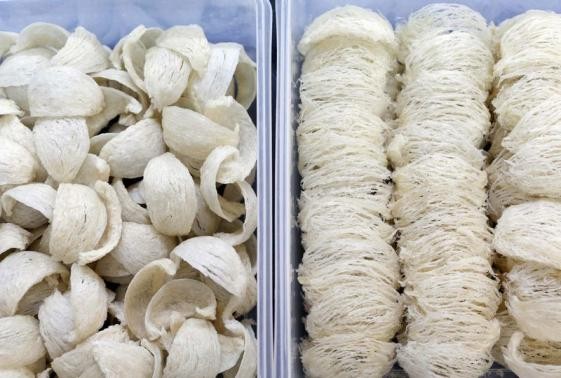Even though the start of the Year of the Sheep arrived last week, stimulating discussion about other similarly hoofed animals like goats and rams, the discussion in a lucrative sector of the Southeast Asian economy has been all about birds: swiftlets and the saliva that they produce to be exact.
The saliva-based nests that are constructed by swiftlets have been considered a certified delicacy in China for centuries, as consumers continue to praise the supposed health benefits of the bird product.
In a bid to broaden the unusual delight's appeal, Southeast Asian producers are combining it with mainstream fare like coffee and cereal so that people will be less hesitant to try the delicacy.
If the bird nest merchants are successful in their promotional campaign, they will benefit through healthier bottom lines, as their saliva-based constructions are one of the world's most expensive food items.
A swiftlet-saliva nest can be presented in retail settings with a per-kilogram price tag as high as $2,500, while one Malaysian producer told the media that its bird's nest skin care, pudding and candy products can deliver profit margins that are 10 times greater than the plain nests.
Indonesia, Malaysia, Thailand and Vietnam are the native habitats of the birds that are responsible for weaving the nests.
However, while Southeast Asia is the homeland of the indigenous swiftlet, it is in China that the vast majority of consumption takes place. Nearly 90 percent of all bird's nests, which are typically eaten at meal times in soup, are consumed in China, where $5 billion in revenue was generated last year.
Business executives in the sector believe this total will rise to $10 billion over a mere five-year time frame.



























